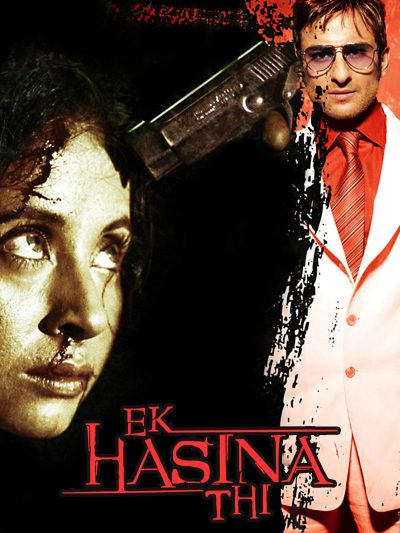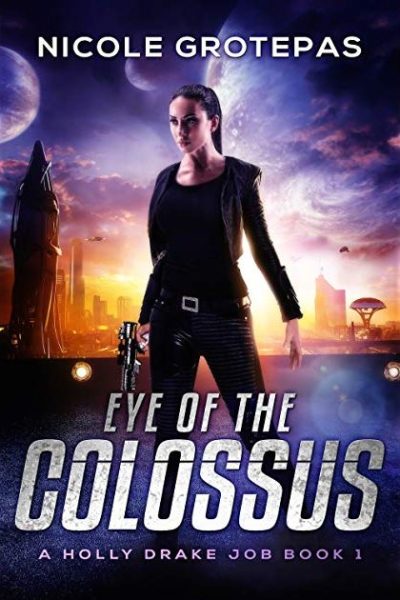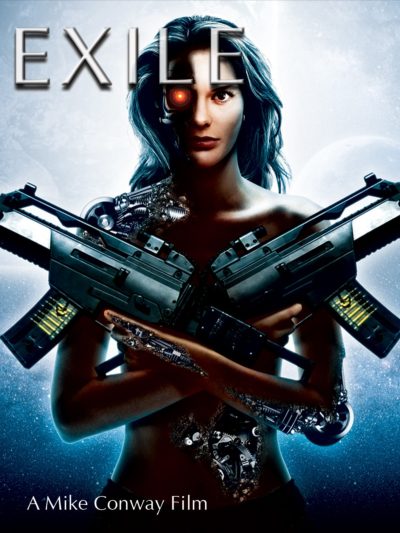 Canadian author Kelley Armstrong is best known as a bestselling writer of urban fantasy. Her Nadia Stafford trilogy was her first foray into the mystery/crime fiction genre. Having already read the sequel novellas that conclude the series, I really want to read the original trilogy. This first volume didn’t disappoint!
Canadian author Kelley Armstrong is best known as a bestselling writer of urban fantasy. Her Nadia Stafford trilogy was her first foray into the mystery/crime fiction genre. Having already read the sequel novellas that conclude the series, I really want to read the original trilogy. This first volume didn’t disappoint!
After a short, grim prologue in third person, Chapter 1 introduces us to series protagonist Nadia, who’ll be our first person narrator for the bulk of the novel. (The parts from other viewpoints are in third person.) Now 32 years old (so, though the books were written from 2007-2017, the story arc of the series actually covers just three years in her life), she owns and operates a guest lodge in the northern forests of her native Canada. Raised in a family of cops, she’s always had a strong compulsion to serve justice and protect the innocent, which deepened and became more driven after the death of her much-loved cousin, who was murdered when the girls were in their teens. (Nadia still blames herself for not keeping Amy safe.) When she followed in her family footsteps by joining the force, that compulsion had to be tempered by laws and procedures protecting suspects and requiring due process, that exist for a good reason. In her early 20s, there came a triggering incident where her reaction couldn’t be tempered, and boiled over in an act of vigilantism that cost her her badge. Investing in her lodge was a way of rebuilding her life. But she’s fortunate in employing a married couple who can manage the place at times if she has to be away for awhile; because she has an un-advertised side occupation.
The lodge barely breaks even, and six years ago was on the verge of bankruptcy. A regular guest was aware of her financial troubles, and of her history. He happened to be a high-ranking member of New York City’s Tomassini Mafia family. His family aren’t philanthropists, and don’t have much in the way of ethical values –but he could respect hers, and understand something of her mindset. Occasionally, the Tomassini’s interests call for the elimination of some genuinely bad person, who really is a threat to the innocent; and at those times, they’re willing to pay top dollar to someone who can accomplish their purpose capably, without getting caught. So, he had a business proposition for her; and when she accepted it, she saved her lodge.
But she also crossed a line that put her permanently on the wrong side of the law, precluded much possibility for normal close human relationships, and set her on a dark and morally problematic path. She doesn’t relish killing in itself, even of the deserving and dangerous, and is painfully aware that a regular diet of it is troubling and unhealthy. But it does allow her, in some sense, to fulfill her inner compulsion, and it’s become an inescapable part of the person that she is, which she shoulders responsibility for. Her narrative voice looks at herself honestly and self-critically, but without apology. So if you, the reader, are going to be friends with her, you’ll have to look her in the eye and decide whether you can accept her as is. (Obviously I can, since I’m a series fan.)
Early on here, she gets a visit from her taciturn older acquaintance Jack. She’s gotten to know him some (though that’s not easy) in the last few years, since he first showed up at the lodge and let her know that he’s also in her illegal line of work. He’s been back sometimes since, and become a bit of a mentor, with professional advice that she’s found useful. Now, he’s bringing news of the Helter Skelter Killer who’s been terrorizing the U.S. (she’s heard of the case, but deliberately refused to immerse herself in the details). Over a period of nine days in October, across several states, four very diverse people have been murdered, in different localities and all by different means; the only unifying factor is a page torn out of the book Helter Skelter and left beside each of the victims. The chilling twist, though, is that law enforcement officials believe the perp is actually a professional killer, who’s gone rogue and is now dropping random bodies. This has produced an unusual spotlight of police attention on the very small world of long-term hitmen/women, resulting in a couple of arrests, much inconvenience, and a general climate that’s very bad for business.
By nature and necessity, the denizens of this circle are not a gregarious and chummy bunch; but to the extent that they do share information and opinions, their general consensus is that this wacko needs to be identified and stopped, NOW. Jack wants to know if Nadia’s willing to bring her cop skills to the table and partner with him in this hunt. She’s not too keen about coming out from behind her curtain of anonymity, even just among other assassins; and while talking to Jack sometimes at her lodge is one thing, she’s got some trust issues about going off to the States with him and working together. But …the precious lives of more potential victims that this killer might take are at stake, and Nadia is Nadia. Having gotten to know her by reading the novellas, I wouldn’t have been surprised by her answer even if I hadn’t read the cover blurb of the book. :-) So, as Sherlock Holmes might have said, the game is afoot!
As a rule, I don’t care for the idea of serial-killer fiction, and mostly avoid it (the one other exception being Agatha Christie’s The ABC Murders). I’m also not usually a particular fan of romantic triangles, despite my liking for the Twilight Saga, and we get something of that vibe here. (Having read the later books, I already knew how that would play out –and my reviews of those books would be “spoilers” for that aspect!– but reading the series in order is probably the best way to experience the character arcs and relationship developments.) Unlike in the Christie book, we do experience most of the serial killings directly, although they’re done quickly and Armstrong doesn’t wallow in the gore, and we do get in the killer’s sick and disturbed head some –thankfully, only at times and briefly, but it’s an unpleasant place to be.
Coupled with the mitigating factors, though, the author’s strong character study of Nadia herself made this a worthwhile read. She’s a fascinating, complex character (and when the chips are down, an actual heroine despite the ethical issues some of her life choices present), and not the only one of those here; very vivid, round and complicated characterizations are one of this author’s particular strengths. Even minor characters who only appear for a few pages are often illuminated clearly enough to be memorable. Not many of them are particularly likeable (although Nadia honestly is, at least to me, and that’s an assessment I think series fans in general would echo), but you do understand them –or, if you don’t, you’re intrigued enough to want to peel back more of the layers.
This is a genuine, challenging mystery that takes detection and deduction to solve, and Nadia and her unlikely fellow sleuths don’t have access to the kind of crime scene investigation and witness interviews that the FBI does. (Fortunately, though, which partially compensates, they do have more knowledge of the shadowy world of killers for hire than the authorities do.) It’s definitely a mystery of the “American” school, not its staid and cerebral British counterpart: gritty, violent and fraught with danger, and peppered with bad language, though I considered the level of the latter legitimate in terms of realism for these characters. (There’s no sex, explicit or not, but there is some reference to it; Nadia isn’t often promiscuous, but her attitudes are colored by the fact that she doesn’t expect marriage to ever be in her possible future.) The investigation snakes through a dark underside of America, where not only the serial killer but other nefarious types as well have dark secrets, and no scruples about eliminating the nosy. And while Nadia’s very protective of innocent life, even when it’s not convenient to be –despite her hit woman credentials, you could totally trust her to babysit your toddlers!– thugs who want to kill her may find her quite lethal.
Overall, this is a gripping read right from the starting gate (Armstrong leaves two dead bodies lying on the first nine pages), with a lot of action and a real page-turning quality. With the above-mentioned caveat for language issues, I’d highly recommend it to mystery/crime fiction and action “thriller” fans.
Author: Kelley Armstrong
Publisher: KLA Fricke Inc.; available through Amazon, both for Kindle and as a printed book.
A version of this review previously appeared on Goodreads.
 Stacey Anderson (Sturman) is an agent for the CIA. When an operation in Tunis goes bad, she is blamed, and the intelligence which was supposed to have been collected – a complete list of Russian assets – goes missing. Stacey is disavowed by the organization, and dumped out, with a new identity. Five years later, she’s a saleswoman for a PR company, and her boyfriend, Ken (Haymes) has just proposed, when Stacey’s old life comes back to haunt her. An assault on her workplace shows that someone clearly believes she knows more about the list than she admitted. She is forced on the run, with Ken, while she tries to figure out whether it’s the Russians, or a rogue faction within her former employers. Fortunately, this wasn’t entirely a surprise, and Stacey is quite well-prepared. Less expected: having to take her new fiance along with her.
Stacey Anderson (Sturman) is an agent for the CIA. When an operation in Tunis goes bad, she is blamed, and the intelligence which was supposed to have been collected – a complete list of Russian assets – goes missing. Stacey is disavowed by the organization, and dumped out, with a new identity. Five years later, she’s a saleswoman for a PR company, and her boyfriend, Ken (Haymes) has just proposed, when Stacey’s old life comes back to haunt her. An assault on her workplace shows that someone clearly believes she knows more about the list than she admitted. She is forced on the run, with Ken, while she tries to figure out whether it’s the Russians, or a rogue faction within her former employers. Fortunately, this wasn’t entirely a surprise, and Stacey is quite well-prepared. Less expected: having to take her new fiance along with her.





 Complete ranking of Enolas
Complete ranking of Enolas A somewhat cheesy melodrama, this throws together elements from Western pot-boilers Double Jeopardy and If Tomorrow Comes, adds a handful of Bollywood spice, and to be honest, probably overcooks the whole thing a bit. The title translates as “There Was a Beautiful Woman”, presumably referring to the heroine of the piece, travel agent Sarika (Matondkar). Into her office one day comes hunky businessman Karan Singh Rathod (Khan), and after some reluctance, she begins a relationship with him. However, it turns out he is actually a mobster, and manipulates her into taking a fall rather than incriminating him, which nets Sarika a seven-year prison sentence. Escaping from jail, she vows to destroy her former lover, and in turn, works on framing Karan with his criminal pals, by making it look like he murdered a colleague and stole money.
A somewhat cheesy melodrama, this throws together elements from Western pot-boilers Double Jeopardy and If Tomorrow Comes, adds a handful of Bollywood spice, and to be honest, probably overcooks the whole thing a bit. The title translates as “There Was a Beautiful Woman”, presumably referring to the heroine of the piece, travel agent Sarika (Matondkar). Into her office one day comes hunky businessman Karan Singh Rathod (Khan), and after some reluctance, she begins a relationship with him. However, it turns out he is actually a mobster, and manipulates her into taking a fall rather than incriminating him, which nets Sarika a seven-year prison sentence. Escaping from jail, she vows to destroy her former lover, and in turn, works on framing Karan with his criminal pals, by making it look like he murdered a colleague and stole money. The title is the English translation of “karate,” yet seems oddly appropriate for a film which barely clears the necessary quota of action to qualify for this site. I can’t say I felt my time was wasted, as such. Yet if you’re looking for a plethora of martial arts, you’ll be disappointed, despite the poster and a story which certainly could have gone in a much more action-oriented direction.
The title is the English translation of “karate,” yet seems oddly appropriate for a film which barely clears the necessary quota of action to qualify for this site. I can’t say I felt my time was wasted, as such. Yet if you’re looking for a plethora of martial arts, you’ll be disappointed, despite the poster and a story which certainly could have gone in a much more action-oriented direction. Really, for a reported budget of about $6,500 – and those are Canadian dollars, which currently works out to less than five grand in freedom dollars – this is quite impressive. You could argue that trying to create a convincing post-apocalyptic scenario on such a tiny budget is biting off more than you can chew. And there are certainly moments which just don’t work. But in its low-key approach, it’s probably a more accurate reflection than many of the way in which the world might end. Not with a bang, but with a whimper, and a slow grinding to a halt.
Really, for a reported budget of about $6,500 – and those are Canadian dollars, which currently works out to less than five grand in freedom dollars – this is quite impressive. You could argue that trying to create a convincing post-apocalyptic scenario on such a tiny budget is biting off more than you can chew. And there are certainly moments which just don’t work. But in its low-key approach, it’s probably a more accurate reflection than many of the way in which the world might end. Not with a bang, but with a whimper, and a slow grinding to a halt. This probably picked up half a star in the final couple of chapters, because up until the end, the plot seemed to have some huge deficiencies. While most of these were certainly addressed by the final resolution, it still left a rather questionable taste in my literary mouth [if you see what I mean!]. The heroine is Holly Drake, who has been unjustly sent to prison after killing her abusive husband. Unfortunately, he was a police officer, and some of his dubious colleagues helped ensure Holly went to jail for it. On release, her previous career as a teacher is no longer an option, and she’s largely thrown on to the charity of her sister, Meg, also a cop.
This probably picked up half a star in the final couple of chapters, because up until the end, the plot seemed to have some huge deficiencies. While most of these were certainly addressed by the final resolution, it still left a rather questionable taste in my literary mouth [if you see what I mean!]. The heroine is Holly Drake, who has been unjustly sent to prison after killing her abusive husband. Unfortunately, he was a police officer, and some of his dubious colleagues helped ensure Holly went to jail for it. On release, her previous career as a teacher is no longer an option, and she’s largely thrown on to the charity of her sister, Meg, also a cop. Earlier this year, because he knew that I’d greatly liked the two previous Sabel Security novels, my Goodreads friend Seeley James gifted me with the e-book editions of all of the remaining five. This was just an act of friendly generosity, with no actual request for reviews; but I’m glad to treat them as review copies, and (as always) to review them fairly on their merits. This book’s merits earn it very high marks, which came as no surprise to me!
Earlier this year, because he knew that I’d greatly liked the two previous Sabel Security novels, my Goodreads friend Seeley James gifted me with the e-book editions of all of the remaining five. This was just an act of friendly generosity, with no actual request for reviews; but I’m glad to treat them as review copies, and (as always) to review them fairly on their merits. This book’s merits earn it very high marks, which came as no surprise to me! “I realized that there was no such thing as a boundary between good or evil, black and white, right or wrong. All I learned is that this world is divided by the executed and executioners.” The above is spoken by a character toward the end of this, and explains the significance of the title, though your mileage may vary as to how convincing it is as an explanation. Four young women go to a country house by a lake, which holds dark memories for one of them. Belle (Dallender, known here from
“I realized that there was no such thing as a boundary between good or evil, black and white, right or wrong. All I learned is that this world is divided by the executed and executioners.” The above is spoken by a character toward the end of this, and explains the significance of the title, though your mileage may vary as to how convincing it is as an explanation. Four young women go to a country house by a lake, which holds dark memories for one of them. Belle (Dallender, known here from  Space freighter pilot Jason (Sheridan) has his craft hijacked, and is forced to crash-land it on a deserted planet. Blinded and alone, things look grim for him, until he’s fortunate enough to be found by android Reyna (Guzzetta). She’s the product of a maverick genius, who took refuge on the planet, but recently died: she needs Jason, as the systems which power her require a human presence in order to operate. And he needs her – in particular, her advanced combat skills – in order to protect him, both from the planet’s hostile fauna, and the hijacker’s pals, who have followed him down to its surface. Yet, is Reyna entirely trustworthy?
Space freighter pilot Jason (Sheridan) has his craft hijacked, and is forced to crash-land it on a deserted planet. Blinded and alone, things look grim for him, until he’s fortunate enough to be found by android Reyna (Guzzetta). She’s the product of a maverick genius, who took refuge on the planet, but recently died: she needs Jason, as the systems which power her require a human presence in order to operate. And he needs her – in particular, her advanced combat skills – in order to protect him, both from the planet’s hostile fauna, and the hijacker’s pals, who have followed him down to its surface. Yet, is Reyna entirely trustworthy?